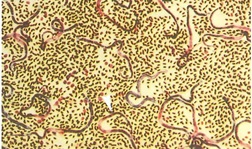Blood parasites and their mode of spread among birds
DOI:
https://doi.org/10.34080/os.v2.23058Keywords:
infection, threats, wadersAbstract
The occurrence of blood parasites (Leucocytozoon, Haemoproteus, Plasmodium, Trypanosoma, and microfilaria) was determined in 774 birds of 50 different species, collected in 1948—1960. The incidence varied considerably, being high in e.g. gallinaceous birds and zero in waders. Usually, birds carrying parasites showed no signs of being detrimentally affected. Only a few fatal infections are reported: Leucocytozoon in Tetrao uragallus and Anas platyrhynchos, Plasmodium in T. uragallus and Pica pica, and Haemoproteus in Strix aluco. The sample includes a special study of 299 waders of 12 species on autumn migration. None of them carried any blood parasites. There is little that suggests that long distance transport of blood parasites should be important for the level of infection among birds in Sweden. High incidence in several resident species rather shows that the parasites are well established in the country, and the short incubation time for at least some parasites in relation to the period of spring migration supports the same view.
Downloads

Downloads
Published
How to Cite
Issue
Section
License
The copyright of each contribution belongs to the author(s), but all contributions are published under a Creative Commons license, so that anyone is free to share and reuse the contribution as long as the copyright holder is attributed.







